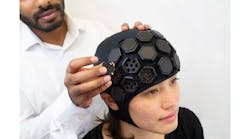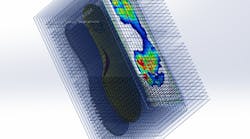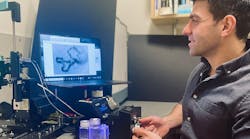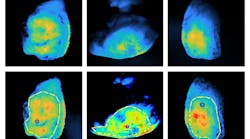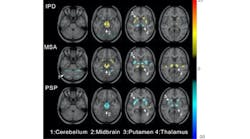Biometric techniques cause confusion
I read with great interest both George Kotelly`s introduction and Shari Worthington`s article on biometrics in the Jan. 1998 Vision Systems Design. I laud your interest and forward-looking treatment of these emerging technologies, but as CTO of Sensar, I feel it is my obligation to point out several oversights. In Mr. Kotelly`s opening, he neglected to mention iris recognition, and since it is likely that iris recognition will prove to be the most discriminating biometric technique, I felt that it should have been mentioned. In Ms. Worthington`s article, Sensar`s ATM application with iris identification is mentioned. Most of her comments are correct, except the comment about needing only 64 characters of data. In fact, we encode the iris into 512 bytes. Your statement that iris identification is more reliable and less intrusive than fingerprints or retinal scanning is correct, however.
But Mr. Forascella of TRW is incorrect about his assertion that "the biggest problem with iris identification is its unreliability." He has iris imaging confused with retinal scanning. The iris is on the outer portion of the eye, while the retina is on the inside, back surface of the eye. Iris imaging does not rely on blood vessels, retinal scanning does. In any case, Mr. Forascella has misrepresented both the reliability and methodology of iris identification.
Michael Negin
Sensar Inc., Moorestown, NJ
E-mail: [email protected]
Recently I had the opportunity to read your excellent article on biometrics in the January Vision Systems Design. In this article, there is a quotation attributed to Al Forascella of TRW Systems Integration that does not have basis in fact: "The biggest problem with iris identification is its unreliability. The blood vessels in the eye can change from one day to the next."
What Mr. Forascella claims is true if it were to apply to retinal scanning. The iris is an organ of the eye quite a bit distanced from the retina. The iris is not affected by diabetes or any blood vessel pattern change associated with the retina. In reality, the iris is affected by only a few rare diseases and even those usually affect only one eye.
The lack of understanding of eye anatomy often results in unwarranted confusion between the iris and the retina. As for accuracy and reliable performance of the iris-recognition technology, all testing to date indicates that iris recognition using our proprietary algorithm is the most accurate biometric process available today or in the forseeable future. The iris-recognition software embedded in the referenced Sensar product for ATMs is licensed from IriScan Inc., and we hold the only patents in the world on iris-recognition technology and process.
Cletus B. Kuhla
IriScan Inc., Mt. Laurel, NJ
E-mail: [email protected]
Editor`s reply
Mr. Kuhla and Mr. Negin are indeed correct, iris identification is one of the most promising technologies in the biometrics industry. And, given their corporate affiliations, they are enthusiastic about the technology and its long-term implications.
The reality, from the public`s perspective, is a little more complicated. Retinal scanning, which involves an electronic scan of the innermost layer of the eyeball`s wall, has accuracy on its side, as the retina generally remains stable throughout a person`s life. However, retinal scanning requires close physical contact with a scanning device, which is not generally accepted by the public.
Iris scanning, on the other hand, is a noninvasive procedure that does not require the close physical contact of retinal scans. Unfortunately, the technology is still relatively expensive and requires large amounts of computer storage.
While biometrics is a security-enabling technology, the vendors still need to do a lot of work educating the public as to how their approaches differ from other technologies that are used to compile information on each of us and our habits. For more information consult Bill Rogers` Biometric Digest at webusers.anet-stl.com/~wrogers/ biometrics/biodigest.html.
Shari Worthington Contributing Editor
